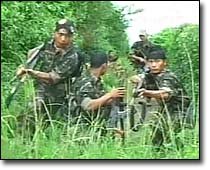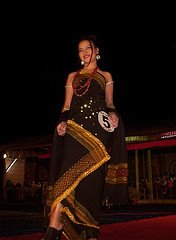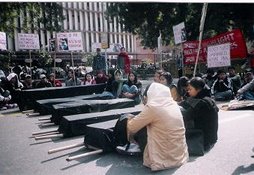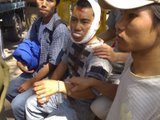- GENETICS AND THE KUKI SOCEITY - - Part 1 -
Chong Singsit,Ph.d
Introduction In a changing world, the laws of hereditary discovered by Augustinian monk George Gregory Mendel has stood the test of time, unchallenged, and is still the basis by which relationships among living organisms is explained.
There is no denying that genetic science has impacted our society, the government, science and technology, and the moral code of conduct.
Today courts decide the fate of accused criminals based on DNA testing, the eating of genetically modified food, and the practice of gene therapy; all of which will one day be routine rather than the exception.
The landmark sequencing of the human genome unlocked the genetic mystery of the human physiological functions and promised superior individual healthcare, including designer drugs. While the technology is astonishing, it also interferes with personal privacy and exposes individuals vulnerable to insurance company's decisions about personal healthcare.
This article is an excerpt of a seminar given on Thanksgiving Day November 22, 2007 at a gathering of the Kuki-Chin community at Tulsa, Oklahoma, USA to celebrate Chavang Kut (Harvest Festival).
The primary objective of this article, however, is the role of genetics in tracing human origin, ancestry, and personal behavior. People have wondered for ages how traits are inherited from one generation to the next, and why children often look more like one parent than the other, though most offspring possess blended characteristics of both parents.
DNA testing is the only empirical evidence that genetic imprinting on the chromosomes have taken place, establishing the laws of hereditary. While the role of DNA in ancestry study is more discreet, the influence of genes on human behavior is harder to establish.
Certain individuals may be born with genetic conditions that are likely to exhibit aggressive behaviors. The role of DNA in tracing individual identity may be harder to establish because of the environmental components that influence gene expression.
What can our genes tell us about who we are?
Do our genes affect behavior, personality, and self?
Is there a connection between genetic structures and specific behaviors?
How should we respond to the concept of freedom and responsibility?
Every genetic trait must be tempered with personal responsibility. If our genes direct us to behave in a certain way, can we evade the consequences of that action? Our founding fathers were wise to acknowledge God by inserting a statement in the constitution "all men are created equal, that they are endowed by their Creator with certain unalienable Rights, that among these are life, liberty and the pursuit of happiness."
It is true that certain behaviors may have genetic components while others are acquired; nevertheless, there is no excuse for irresponsible behavior for normal human beings carrying 23 chromosome pairs.
DNA is the abbreviation for deoxyribonucleic acid, which is the genetic material present in the cells of all living organisms. DNA is the fundamental building block for an individual's entire genetic makeup. A person's DNA is the same in every cell (with a nucleus).
The DNA in a person's blood is the same as the DNA in their skin cells, semen, and saliva. Genetics is the study of genes and hereditary.
Since the discovery of DNA "the molecule of life" by James Watson and Francis Crick, at the University of Cambridge in 1953, molecular biologists have made many advances in the understanding of DNA and other nucleic acids.
DNA is a language whose alphabet has 4 letters,
*adenine (A),
*cytosine (C),
*guanine (G), and
*thymine (T).
Cells read the letters and make a copy (transcription) into a slightly different language called messenger RNA (mRNA), which then translates into a totally different language called proteins. Those sentences are called genes. DNA is self replicating and self perpetuating and translates its message into protein.
Tracing ancestry based on DNA is not just an academic exercise, but also has other practical applications. A geneticist at Howard University offered commercial genetic ancestry tracing to African-Americans who wanted to trace their genetic lineage back to the areas of Africa from which their ancestors were captured and brought to America as slaves (Elliott and Brodwin 2002).
The emergence of several commercial genetic testing ventures offering fee-for-service paternity testing, tests for evidence of Jewish ancestry and Native American ancestry.
Owing to the practice of close marriages, social structure and culture within these two societies (Jewish and Native American), the genetic traits is easily traceable within these communities.
Well before the advent of molecular genetics, the tracing of ancestry played an important and controversial part in political identity. While genetic ancestry tracing is becoming increasingly popular, its limitations make the information it reveals subject to misinterpretation.
In light of this, it is worth noting genetic ancestry has the potential to disrupt identity claims as well as to corroborate them. To be continued...


























